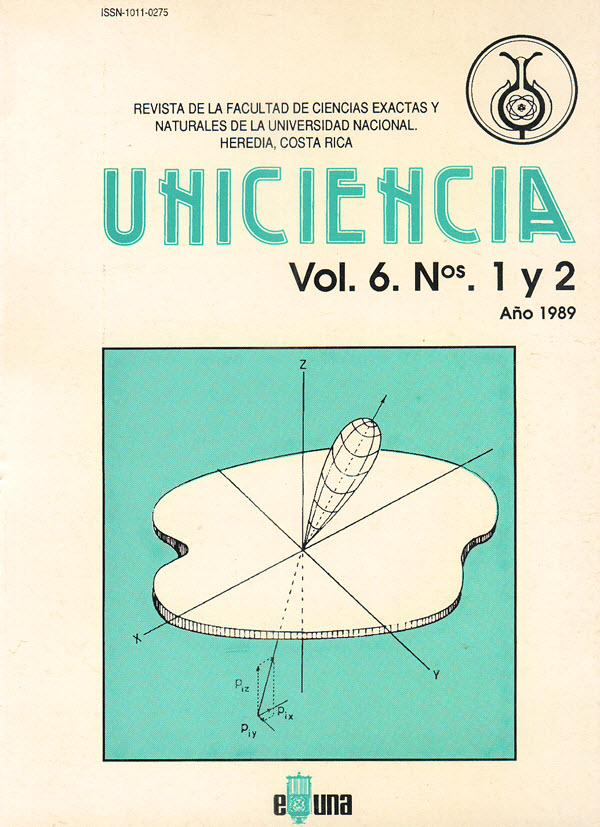Ataque de las polillas Scrobipalpopsis solanivora y phthorimaea operculella (Lepidoptera, Gelechiidae) y su relación con la fenología de la papa en Cartago, Costa Rica. (ING)
Keywords:
polillas, fenología, papa, Cartago.Abstract
Growth of vegetative structures (foliage, tubers and roots) and flowering patterns were studied for Atzimba and “Segura” potato varieties. Leaf number increased linearly and plant height followed a sigmoid pattern during the growing season; fresh and dry weights of vegetative parts increased in a curvilinear manner. The largest absolute production of aerial biomass occurred between the 5th and 7th weeks, and that of tubers occurred between the 13th and 15th weeks. Flowering and tuberization began at the 6th week.
Tubermoths appeared on potato fields at flowering onset. Thus, the hypothesis the Tubermoths are attracted by the flowers is proposed. A phenological crop model is presented, based on which options to diminish tubermoth economic impact are discussed.
References
-
Downloads
Published
Issue
Section
License
Authors who publish with this journal agree to the following terms:
1. Authors guarantee the journal the right to be the first publication of the work as licensed under a Creative Commons Attribution License that allows others to share the work with an acknowledgment of the work's authorship and initial publication in this journal.
2. Authors can set separate additional agreements for non-exclusive distribution of the version of the work published in the journal (eg, place it in an institutional repository or publish it in a book), with an acknowledgment of its initial publication in this journal.
3. The authors have declared to hold all permissions to use the resources they provided in the paper (images, tables, among others) and assume full responsibility for damages to third parties.
4. The opinions expressed in the paper are the exclusive responsibility of the authors and do not necessarily represent the opinion of the editors or the Universidad Nacional.
Uniciencia Journal and all its productions are under Creative Commons Atribución-NoComercial-SinDerivadas 4.0 Unported.
There is neither fee for access nor Article Processing Charge (APC)






